The patented Derma Membrane Structure technology is making huge waves for modern skin care dermatological preparations and topically applied medications as it does not contain any aggressive or unwanted chemicals to the skin. DMS technology for skin offers many benefits to consumers, unlike conventional creams that exacerbate transepidermal water loss and lipid dryness due to chemicals and weakened skin barrier. Let's learn more about the unique DMS technology for skin barrier repair and how DMS-based creams and moisturisers with a chemical composition similar to skin physiology will help repair the natural skin barrier from within.
What is DMS in skincare?
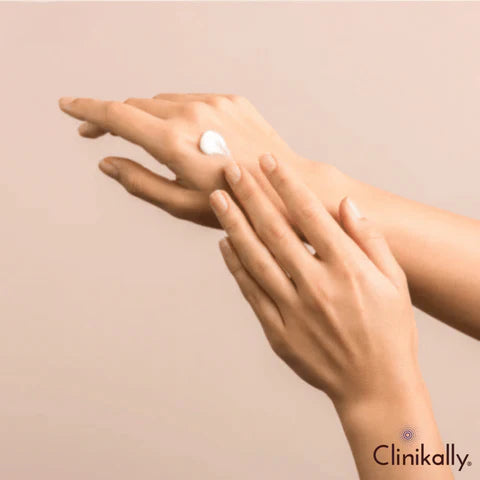
Derma Membrane Structure (DMS) technology is a patented ingredient that helps to repair the skin barrier. The primary purpose of the technology is to protect the skin against environmental damage, such as dryness, irritation, and dehydration. It also helps to improve the skin's overall appearance by improving skin elasticity and firmness. The skin barrier can weaken due to conditions such as too humid or dry environments or exposure to harsh chemicals. DMS repairs damaged parts of your epidermis so they can function properly again. By repairing damaged parts of your epidermis, DMS prevents further damage from occurring. It does this by strengthening these areas so that when you come into contact with an irritant, it won't penetrate through them as easily as it would if they weren't strengthened by DMS. This means that there will be less chance of you having problems like dryness or irritation.
Benefits of DMS Technology for Skin

Using products with DMS can have a number of benefits for the skin as it not only helps prevent further damage to the Skin Barrier but also help repair damage already present in your skin's barrier function. Individual experiences with skincare products might vary, and while DMS technology provides considerable benefits, results may vary depending on skin type, frequency of use, and product formulation. A dermatologist or skincare specialist can assist in determining the best DMS-based products for specific skin issues. Following are the benefits of DMS-based creams and moisturisers.
#1 It is emulsifier-free
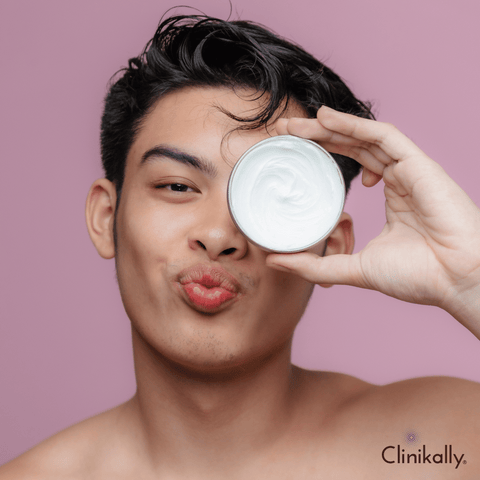
Emulsifiers are commonly found in cosmetic products; you can find them in skin lotions, makeup and even hair care products. Skin tolerance to these emulsifiers can vary and may cause skin irritation. Emulsifiers can also cause modification of the stratum corneum and multilamellar lipid structure and result in the washout effect. Creams containing emulsifiers can cause increased transport of skin's own protective substances such as multilamellar lipids, responsible for slowing transepidermal water loss.
DMS-based creams and moisturisers do not contain conventional emulsifiers that help prevent transepidermal water loss and lipid dryness.
#2 It is non-allergic!

Ingredients for Derma Membrane Structure (DMS) have been carefully selected and do not contain any aggressive and unwanted ingredients like
-
Surface active substances (surfactants) which may damage the protective layer/barrier of the skin
-
Preservatives which can cause allergic reactions and irritate the skin
-
Mineral oils that slow down the recovery of the lipid barrier of the skin
-
Fragrances and dyes that can cause allergic reactions
-
Amines and silicones
#3 It recreates the lamellar structure
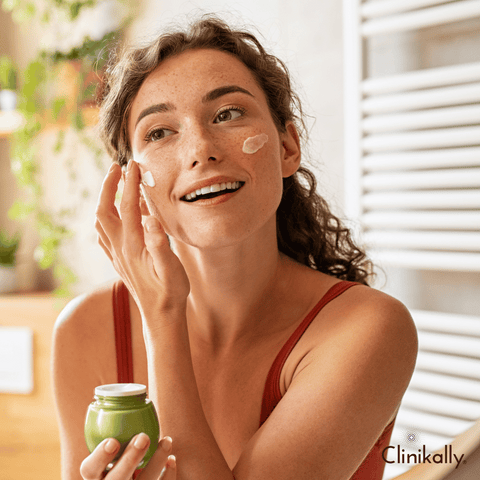
The lamellar lipid phase is one of the skin's first three lines of defence and is primarily responsible for slowing down transepidermal water loss. DMS-based creams/moisturisers have a lamellar structure similar to the lamellar lipid structure of the skin, unlike conventional creams that contain emulsifiers that can cause dryness and irritation. DMS formulations try to duplicate this natural arrangement by including lipids such ceramides, cholesterol, and fatty acids in ratios and configurations similar to those found in healthy skin. The reproduction of the lamellar structure contributes to the reinforcement of the skin's natural barrier function. DMS technology aids in the following areas by reproducing the lamellar structure:
-
Improving Barrier Function: The skin barrier is supported by the lamellar structure of DMS products, which also shields the skin from environmental stresses and stops excessive moisture loss. This reinforcement supports the preservation of ideal skin health.
-
Enhancing Active Ingredient Penetration: DMS formulations can aid in the effective delivery of active substances to the skin. DMS products, by closely replicating the skin's natural lipid structure, may increase medicinal drug absorption, resulting in greater efficacy.
-
Supporting Moisture Retention: DMS technology's lamellar structure aids in the retention of moisture within the skin, boosting hydration and reducing dryness or flakiness.
-
Reducing Sensitivity and Irritation: DMS formulations may be less likely to result in negative reactions or irritation because they conform to the natural structure of the skin. Those with reactive or sensitive skin may benefit from this.
-
Promoting Skin Repair: By supporting the skin's natural repair mechanisms, the imitated lamellar structure may help to restore compromised or damaged skin barriers.
The key to DMS technology's efficacy in promoting general skin health and addressing a range of skin concerns is its capacity to replicate the lamellar structure. It is frequently incorporated into skincare formulas like treatments, serums, and moisturisers because it offers a focused method of nourishing the skin's lipid barrier and fostering a clear complexion.
#4 It has the best selection of lipids

DMS-based creams/moisturisers contain phytogenic skin-related lipids such as triglycerides, cholesterol, phospholipids, free fatty acids, squalene and ceramides best suited for lipid substitution in impaired skin. The following lipids are commonly used in DMS formulations:
-
Ceramides: Lipids that are necessary for the skin's barrier function, reducing moisture loss and guarding against external stresses.
-
Cholesterol: An essential lipid component that contributes to the structural integrity of the skin barrier and its ability to retain moisture.
-
Fatty Acids: This helps to keep the skin moisturised and supple. They contribute to the skin's elasticity and suppleness.
The precise blend and ratio of these lipids in DMS formulations are intended to mimic the lipid composition of the stratum corneum, the epidermis's outermost layer. This selective lipid selection reinforces and supports the skin's natural barrier function, boosting hydration, limiting moisture loss, and promoting overall skin health. While DMS technology is recognised for its lipid-rich formulation that conforms to the structure of the skin, other skincare technologies and formulations may also include lipid-based chemicals that target similar skin benefits. The effectiveness of a lipid-rich formulation is frequently determined by its skin compatibility, the quality of the ingredients used, and the individual's skin type's specific needs. Due to their emphasis on recreating the skin's natural lipid composition, DMS-based solutions could be a helpful alternative for individuals seeking skincare products emphasising lipid-rich formulations or wanting to reinforce the skin barrier.
Effective skin rejuvenation with DMS Technology

The Derma Membrane Structure technology is a patented and revolutionary approach to skin care. There is enough dermatological evidence that the dermal-epidermal junction plays a crucial role in maintaining the skin's barrier function. When this junction is compromised, it can lead to increased transepidermal water loss (TEWL), resulting in dry skin, wrinkles and even infections.
When the Dermal epidermal junction (DEJ) is disrupted with exfoliation or irritation, it can take up to two weeks for the skin barrier function to recover. The Derma Membrane Structure (DMS) provides proper protection against environmental damage.
Tailoring DMS products for different skin types
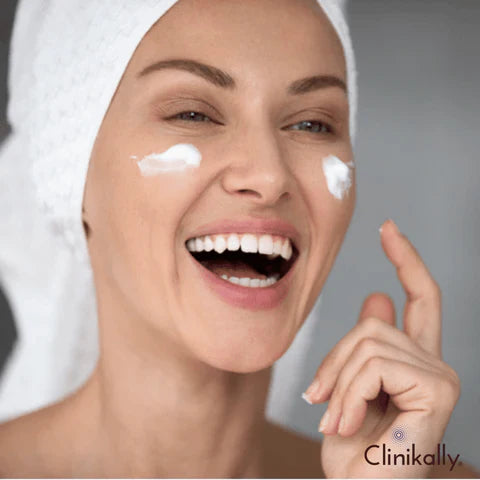
Understanding the specific qualities, demands, and concerns of each skin type is required for designing and modifying DMS (Derma Membrane Structure) solutions for different skin types. Here's how to customise DMS products for different skin types:
-
Identify Skin Types: Normal skin is well-balanced skin that is neither too oily nor too dry. Dry skin is dehydrated, feels tight, and may appear flaky or rough. Oily skin is prone to excessive sebum production, is often shiny, and may be acne-prone. Combination skin has areas that are oily and dry, such as an oily T-zone (forehead, nose, and chin) and dry cheeks.
-
Understand Specific Needs: Hydration and barrier repair are important for dry skin. To keep moisture in, use ingredients like ceramides, hyaluronic acid, and glycerin. Look for non-comedogenic formulations that control sebum production without clogging pores if you have oily skin. Ingredients such as salicylic acid, niacinamide, and lightweight oils can be beneficial. Use hydrating products that do not make you overly oily to maintain equilibrium. Take a well-rounded approach, focusing on certain areas and using the right formulations.
-
Customise Formulations: Use moisturisers that suit different skin types by varying the viscosity and ingredients. Richer creams are better for dry skin; lighter lotions or gels might work better for oily skin. Customise active ingredients in serums and treatments according to skin concerns. For example, peptide or hyaluronic acid-containing serums are good for dry skin, and AHAs or BHAs are good exfoliating agents for oily or combination skin. Create cleansers that efficiently eliminate impurities without causing skin stripping. For dry skin, gentle, hydrating cleansers are ideal; for oily skin, foaming or gel cleansers might be more appropriate.
-
Consider Sensitivities: Some skin types may be more susceptible to sensitivity or disorders such as rosacea or eczema. Avoid using strong substances, perfumes, or known irritants. Patch testing should be performed to guarantee that items are hypoallergenic and dermatologically tested.
-
Offer Options for Different Seasons: Skin care requirements might shift with the seasons. In the summer, use lighter textures, while in the winter, use richer, more protecting alternatives.
-
Educate and Recommend: Product usage should be guided by skin type and concern. Make skincare routine recommendations based on your skin type.
-
Collect Feedback: Customers should be encouraged to offer feedback. Use this data to constantly enhance and optimise recipes.
Individual differences exist within each skin type, therefore personalised advice and product flexibility can improve the efficacy and appeal of DMS products for diverse skin types.
Long-term benefits of using DMS in skincare

In skincare, Derma Membrane Structure (DMS) is a technique used in cosmetic compositions to replicate and reinforce the skin's natural barrier. The long-term benefits of utilising DMS in skincare are diverse and can have a major impact on the skin's overall health and look. Among these advantages are:
-
Enhanced Skin Barrier Function: DMS products are designed to replicate the lipid structure of the skin, hence strengthening the skin barrier. This aids in the reduction of transepidermal water loss (TEWL) and the maintenance of adequate hydration levels, resulting in enhanced overall skin health.
-
Improved Moisture Retention: DMS formulations frequently contain chemicals that closely match the skin's natural lipids, such as ceramides, cholesterol, and fatty acids. This helps to keep moisture in and prevents dehydration, resulting in softer, smoother, and more supple skin over time.
-
Reduced Sensitivity and Irritation: DMS products can help alleviate sensitivity and lessen the probability of irritation by maintaining the skin barrier. This is especially good for people who suffer from sensitive or easily irritated skin disorders such as eczema or rosacea.
-
Skin Repair and Restoration: DMS formulations containing ceramides help to repair and replenish the skin's barrier, assisting in the rehabilitation of damaged or compromised skin. This helps the skin's natural capacity to repair and regenerate.
-
Anti-Aging Benefits: By maintaining proper moisture levels and promoting overall skin health, improved skin barrier function can help minimise the appearance of fine lines and wrinkles. Improved hydration can also lead to a more youthful and plump complexion.
-
Protection Against Environmental Stressors: DMS products' enhanced skin barrier can serve as a barrier against UV rays, pollutants in the environment, and other external stressors that over time can harm skin.
-
Long-Term Skin Health: Regular use of skincare products based on DMS can help improve the resilience and long-term health of the skin, enhancing its capacity to face everyday obstacles and preserve a youthful, glowing appearance.
It is important to remember that, while DMS technology has numerous advantages, individual skin types and sensitivities may differ. To identify the best DMS products for certain skin issues and disorders, run patch tests and speak with a dermatologist or skincare professional. Combining DMS products with a full skincare routine can also increase their efficacy in achieving long-term skin health and vitality.
How to use DMS Technology in your skincare
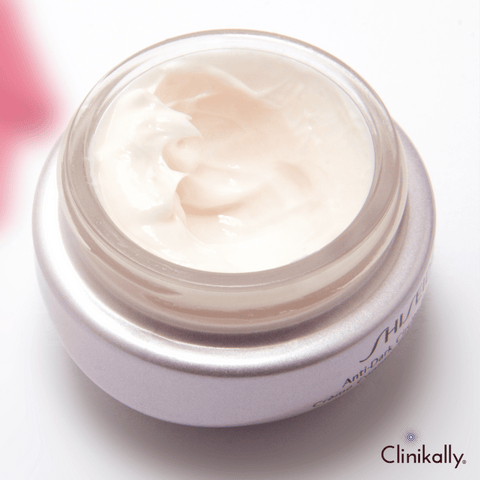
The Derma Membrane Structure Technology contains ceramides, hyaluronic acid, cholesterol and other lipids that help to strengthen the skin barrier function and produce a healthy complexion. You can find Derma Membrane Structure Technology in many different skincare products such as moisturizers and eye cream. Apply these products daily on your face after cleansing your face with a cleanser.
Before starting any new skincare routine its best advised to consult a dermatologist who will give you the best skincare treatment plan based on your unique skin type. Clinikally provides a convenient way to take online dermatologist consultation from the comfort of your home at your chosen time hassle free.
-
Treat acne and acne-prone skin: Acne and acne-prone skin is a common problem with many people. Using DMS based products helps increase the production of elastin and collagen in the skin which helps increase its structure. This will help prevent breakouts caused by damaged skin barriers and clogged pores.
-
Enjoy anti-ageing benefits: Derma Membrane Structure Technology is a breakthrough treatment for anti- ageing. It works at the cellular level to repair damaged skin cells and restore them back to their natural state. The results of using DMS based cream includes improvement in roughness or dryness and decrease in fine lines and wrinkles.
-
Reverse skin barrier damage: Derma Membrane Structure Technology is a new approach to skin care that improves the structure of the skin barrier. It combines ingredients that help to restore the skin's natural barrier function with those that can calm inflammation and reduce redness.
Step-by-step guide for DMS skincare routine
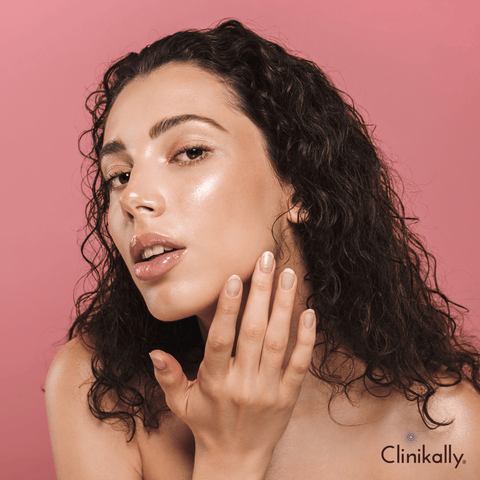
A Derma Membrane Structure (DMS) skincare routine focuses on employing products that support the skin's barrier function and keep it hydrated. Here's a step-by-step guide to getting started with DMS skincare:
-
Cleansing: Use a gentle, pH-balanced cleanser that is appropriate for your skin type. To strengthen the skin barrier, look for a cleanser that contains DMS components such as ceramides or lipids. Apply the cleanser to moist skin and massage gently in circular motions before rinsing thoroughly with lukewarm water.
-
Toning (Optional): If you want to use a toner, choose one that is devoid of alcohol and has moisturising components like hyaluronic acid or glycerin. After cleansing, this procedure can help regulate the skin's pH and prepare the skin for subsequent products.
-
Serum/Application of Active Ingredients: Choose a serum that contains DMS components or specific active compounds that address your skin troubles. For example, hyaluronic acid can help with hydration, niacinamide can help with brightening, and peptides can help with anti-aging. Apply a tiny amount of serum to the face and neck, massaging it in gently. Allow it to thoroughly absorb before proceeding to the next step.
-
Moisturizing: To maintain the skin barrier and trap moisture, use a DMS-based moisturiser rich in ceramides, fatty acids, or cholesterol. Apply a generous amount of moisturiser to your face and neck, rubbing it in with upward motions until completely absorbed.
-
Sun Protection (Daytime Routine): Finish your morning skincare routine with a broad-spectrum sunscreen with an SPF of 30 or higher. Choose a sunscreen that is suitable for your skin type and does not conflict with the DMS-based products being utilised.
-
Occasional Treatments (As Needed): Depending on your skin's demands, incorporate additional treatments such as masks or exfoliants with DMS components or other therapeutic compounds. Use these treatments as instructed, making sure they complement your usual DMS skincare practise without irritating or altering the skin's barrier.
-
Nighttime Routine Variation: The stages for the nighttime routine are the same but without the sunscreen. Consider using slightly richer formulas, such as a thicker moisturiser or an overnight mask, to provide additional hydration and nourishment while the skin heals itself while sleeping.
-
Consistency and Adjustments: Consistency is essential for seeing outcomes. Consistently follow the DMS skincare programme to allow the items to operate efficiently over time. Monitor your skin's reaction and make adjustments as needed based on seasonal changes, skin issues, or individual sensitivities.
While this practise serves as a general guideline, customization is essential. For best results, tailor the products and steps to your skin type, issues, and any particular suggestions from a dermatologist or skincare professional.
Combining DMS with other skincare ingredients
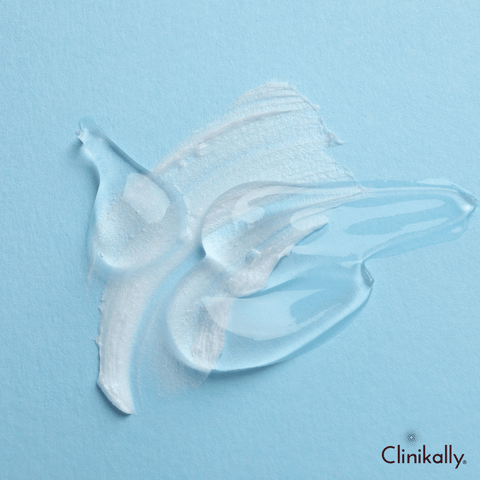
Combining Derma Membrane Structure (DMS) skincare with other helpful substances can boost the efficacy of your skincare routine. Understanding how different components work together to address specific skin conditions while maintaining compatibility and preventing any potential adverse effects is critical. DMS can be combined with the following skincare ingredients:
-
Hyaluronic Acid (HA): HA is well-known for its superior hydrating characteristics. When DMS and HA are combined, the moisturising effects are amplified, assisting in the retention of moisture within the skin. To support deep hydration and a healthy skin barrier, look for products that contain both DMS components (ceramides, lipids) and hyaluronic acid.
-
Vitamin C: Vitamin C is a powerful antioxidant that brightens the skin and protects it from free radicals. Using a Vitamin C serum in conjunction with DMS-based products can help with both hydration and antioxidant protection, resulting in a brighter, more even complexion.
-
Retinoids (Retinol, Retin-A): Retinoids promote cell turnover, which reduces fine lines and wrinkles. It is critical to ensure that your skin barrier is sufficiently supported when utilising retinoids. Combining retinoids with DMS-based moisturisers can help reduce potential retinoid sensitivity and dryness.
-
Niacinamide: Niacinamide is well-known for its several benefits, which include oil management, pore reduction, and general skin barrier enhancement. Combining niacinamide with DMS can provide a balanced approach to hydration and skin texture.
-
Exfoliants (AHAs/BHAs): AHAs (alpha hydroxy acids) and BHAs (beta hydroxy acids) are exfoliants that help remove dead skin cells and unclog pores. Exfoliants should be used in conjunction with the DMS procedure to avoid over-exfoliation. To replace moisture and strengthen the skin barrier, use DMS-based moisturisers.
-
Peptides: Peptides promote collagen formation and skin firmness. When peptides are combined with DMS products, they can provide hydration while also boosting skin healing and anti-aging benefits.
-
Antioxidants (Green Tea Extract, Resveratrol): Antioxidants shield the body from environmental harm and premature ageing. Combining antioxidants with DMS skincare can boost the skin's defence against free radicals, improving overall skin health.
The following must be considered when mixing various skincare ingredients with DMS products:
-
Patch-test new products to detect any compatibility problems or negative reactions.
-
Follow your skin's reaction as you add new ingredients one at a time.
-
Follow the instructions that come with each product and avoid over-layering, which can be irritating to the skin.
-
Consult a dermatologist or skincare expert for customised advice based on your skin type and concerns.
A balanced skincare routine that includes DMS and compatible ingredients can help address a variety of skin issues while maintaining a healthy skin barrier.
Unique DMS Technology in HydraSoothe Moisturiser
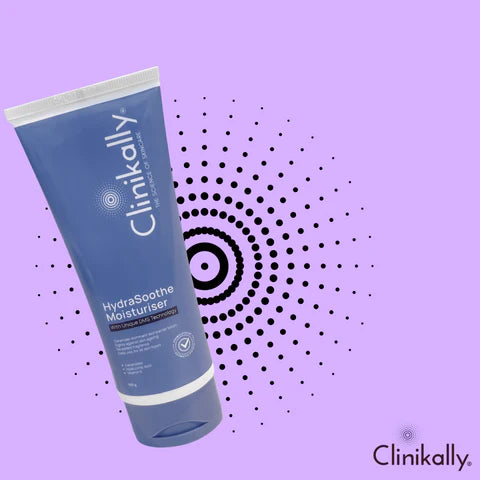
Our dermatologists at Clinikally searched for an ingredient that would specifically help with water retention and the minimisation of transepidermal water loss. That's how we introduced Clinikally HydraSoothe Moisturiser with unique DMS technology.
Derma Membrane Structure technology uses a patented combination of ingredients to repair your skin's natural barrier function. It does this by increasing ceramide production to strengthen your skin's moisture barrier function so it can better withstand external irritants like pollution or harsh weather conditions without causing irritation or dryness on your face or body.
Clinikally HydraSoothe Moisturiser provides the skin with ingredients similar to the skin's structure! It offers long-lasting hydration, prevents premature ageing and preserves the integrity of the stratum corneum and skin barrier.
Analyzing the composition of HydraSoothe Moisturiser
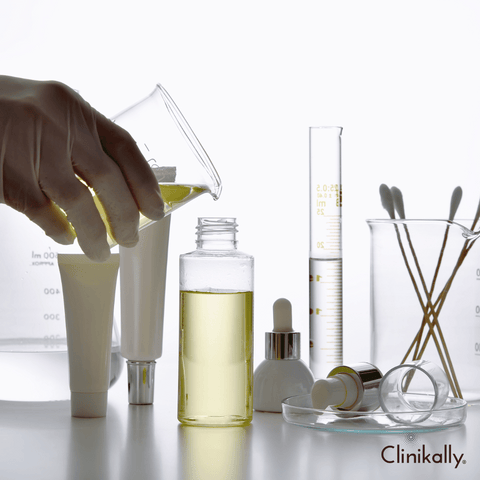
Aside from publicly available information, we do not have access to specific proprietary formulations or product specifications. "HydraSoothe Moisturiser" appears to be a skincare product, but we can't provide an exact analysis of its composition or contents without a specific brand or formulation. however, provide general insights into common chemicals commonly found in moisturisers, particularly those focused on moisturising and relaxing the skin:
-
Humectants: Ingredients such as glycerin, hyaluronic acid, and panthenol attract and retain moisture in the skin, providing hydration.
-
Emollients: Compounds such as ceramides, squalane, and various natural oils (such as jojoba, argan, or almond oil) soften the skin and prevent moisture loss.
-
Occlusives: Ingredients like petrolatum or dimethicone form a barrier on the skin's surface to keep moisture in and protect against environmental stressors.
-
Anti-inflammatory Agents: Plant extracts, aloe vera, and allantoin are a few ingredients that can help calm sensitive or irritated skin.
-
Vitamins and Antioxidants: To shield the skin from damage caused by free radicals and to promote general skin health, include antioxidants such as Vitamins C and E.
To determine the exact composition of the HydraSoothe Moisturiser or other skincare products, see the product label or the brand's website. Ingredients are typically provided in descending order of concentration to enable consumers to identify major components and potential allergies. We recommend examining the ingredient list if you have access to the product packaging or the brand's website to acquire a thorough grasp of the HydraSoothe Moisturiser's formulation. If you have certain substances that you are concerned about or want to learn more about, please contact us, and we will provide information on their normal functions in skincare.
Real-world results: Testimonials and case studies

Testimonials and case studies regarding HydraSoothe Moisturiser or any other specific brand can usually be discovered on the brand's website, social media platforms, online stores, or through user reviews and forums. Real-world outcomes, testimonials, and case studies can provide useful insights into how others have experienced and profited from using a specific skincare product. People commonly share their experiences in the following ways:
-
Brand Websites and Social Media: On their websites and social media profiles, brands frequently feature testimonials and before-and-after photographs. These may provide information about user experiences and the effectiveness of the product.
-
Online Retailers: Reading these evaluations can provide an overview of users' experiences with a product, highlighting both positive and negative elements.
-
Skincare Communities and Forums: Users can discuss their experiences, worries, and outcomes with particular products on websites such as skincare blogs or forums.
-
Bloggers and Influencers in the Beauty Industry: On their platforms, influencers and bloggers regularly provide product reviews for skincare. Their perceptions of a product's performance can be subjective due to their personal experiences and insights.
-
Clinical Studies and Research Papers: To verify the effectiveness of their products, certain skincare companies commission research or carry out clinical studies. These studies can offer scientific proof to back up a product's claims and are frequently published in scientific journals.
Individual experiences with skincare products might vary greatly, so it's critical to evaluate several sources and views when examining testimonials and case studies. Skin type, lifestyle, product consistency, and other skincare practises all play a part in deciding outcomes. If you're seeking user reviews and experiences with the HydraSoothe Moisturiser or a comparable product, we recommend visiting the brand's official website, respected skincare forums, and online stores. Furthermore, if the brand has done clinical trials, they may be available on their website or in scientific databases to provide additional insight into the product's performance.
































